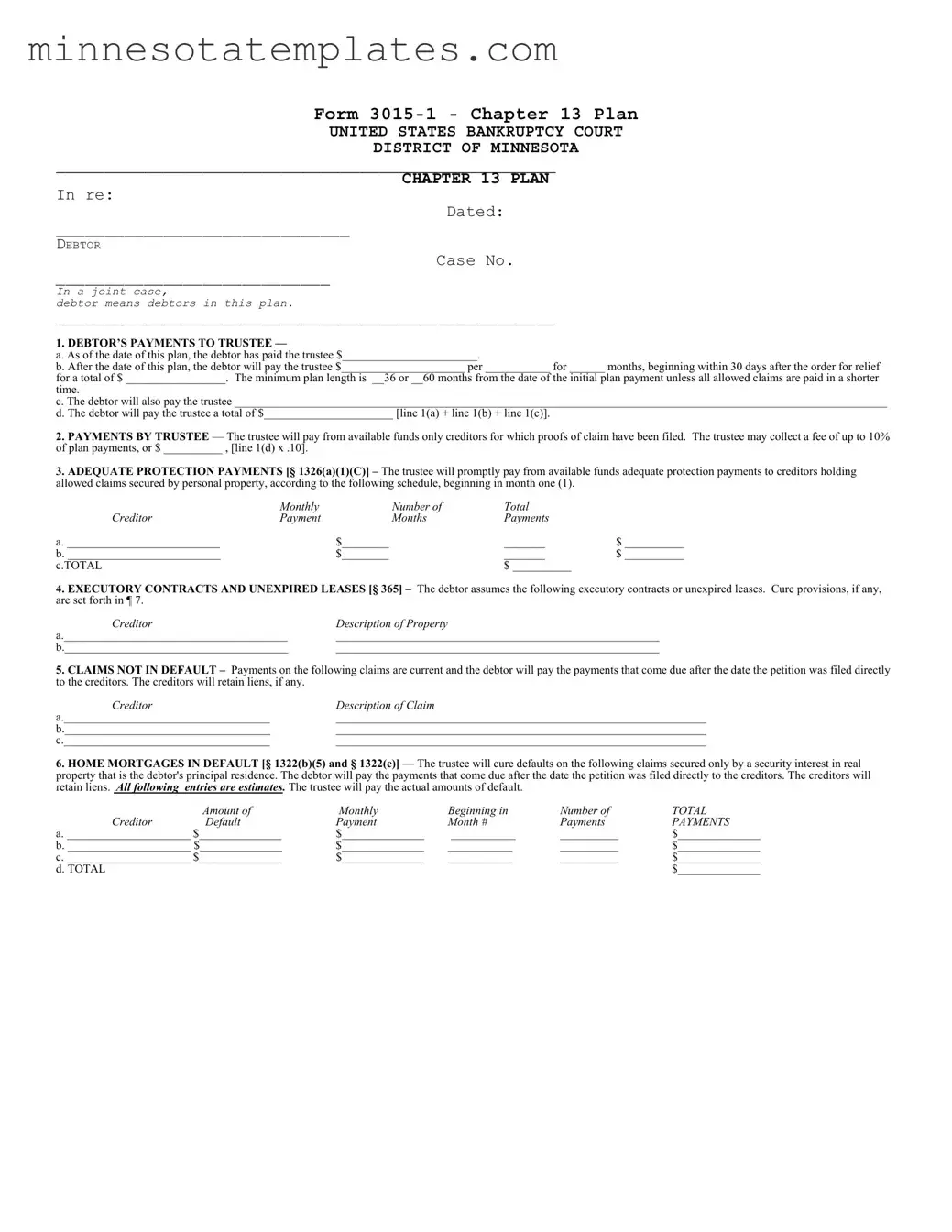The 3015-1 Minnesota form, specifically designed for Chapter 13 bankruptcy plans, serves as a crucial document for debtors navigating the complexities of financial rehabilitation. This form outlines the debtor's commitments to repay creditors over a specified period, typically ranging from 36 to 60 months. It details the payments the debtor will make to the trustee, including any additional amounts necessary to address secured claims, priority claims, and other obligations. The form also specifies how the trustee will distribute funds to creditors, ensuring that all allowed claims are addressed according to legal requirements. Additionally, it includes provisions for curing defaults on home mortgages and other secured debts, while allowing debtors to maintain certain executory contracts and leases. By providing a comprehensive overview of the debtor's financial commitments and the trustee's role, the 3015-1 form facilitates a structured approach to debt repayment, ultimately aiming to restore the debtor's financial stability.
